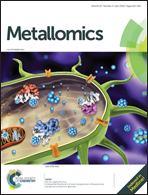Exploring the alternatives of biological nitrogen fixation
Abstract
Most biological nitrogen fixation (BNF) results from the activity of the molybdenum nitrogenase (Mo-nitrogenase, Nif), an oxygen-sensitive metalloenzyme complex found in all known diazotrophs. Two alternative forms of nitrogenase, the vanadium nitrogenase (V-nitrogenase, Vnf) and the iron-only nitrogenase (Fe-only nitrogenase, Anf) have also been identified in the genome of some organisms that encode for Nif. It has been suggested that alternative nitrogenases were responsible for N2-fixation on early Earth because oceans were depleted of bioavailable Mo. Results of recent phylogenetic- and structure-based studies suggest, however, that such an evolutionary path is unlikely, and favor a new model for a stepwise evolution of nitrogenase where the V-nitrogenase and the Fe-only nitrogenase are not the ancestor of the Mo-nitrogenase. Rather, Mo-nitrogenase emerged within the methanogenic archaea and then gave rise to the alternative forms suggesting they arose later in response to the availability of fixed N2 and local environmental factors that influenced metal availability. This review summarizes the current state of knowledge on (1) the biochemistry of these complex systems highlighting the common and specific structural features and catalytic activities of the enzymes, (2) the recent progress in defining the discrete set of genes associated to N2-fixation and the regulatory features that coordinate the differential expression of genes in response to metal availability, and (3) the diverse taxonomic and phylogenic distribution of nitrogenase enzymes and the evolutionary history of BNF from the perspective of metal content and metal availability.

- This article is part of the themed collections: Recent Review Articles and Metallomics 2018 Most Downloaded Articles


 Please wait while we load your content...
Please wait while we load your content...